Contents
A SCR power regulator is electronic devices that are commonly used for controlling the power output of resistive heaters, such as those used in industrial applications such as ovens, furnaces, and dryers. The name SCR stands for Silicon Controlled Rectifier, which is a type of semiconductor that can be used as a switch to control the power to the heating element.
What is a SCR?
A thyristor, also known as a Silicon Controlled Rectifier (SCR), is a controllable rectifying device that consists of a four-layer structure with three P-N junctions. It is a high-power semiconductor device that is relatively small in size, structurally simple, and functionally strong, and is commonly used in electronic equipment and products. The device is widely used as a controllable rectifier, inverter, frequency converter, voltage regulator, and contactless switch. Thyristors are prevalent in household appliances such as dimmable lights, speed-controlled fans, air conditioners, televisions, refrigerators, washing machines, cameras, combination stereos, sound and light circuits, timers, toy devices, wireless remote controls, cameras, and industrial control systems.

SCR products have two control modes: phase control and zero-crossing control. The following diagram visually shows the difference between the two:

What is the scr power regulator phase control?
Phase Control: It works on each AC sine wave and changes the conduction angle of each positive and negative half-wave to control the voltage magnitude. Therefore, the output voltage and power can be adjusted.
What is a scr voltage regulator's zero-crossing control?
Zero-Crossing Control: Within a set period Tc, typically one second, a trigger signal is used to turn on and off the main circuit for several cycles. By changing the on-off time ratio of the thyristor within the set period, the average power of the AC power on the load can be adjusted, achieving the purpose of power load regulation. Depending on the distribution of the output voltage, Zero-Crossing Control can be divided into allocated zero-crossing control and time-proportional adjustable control. Allocated zero-crossing control distributes cycles evenly based on the output percentage within Tc period; Time-proportional zero-crossing control continuously turns on several cycles based on the output percentage within Tc period, and then turns off several cycles within the remaining time of the Tc period.
The waveforms of the output of Phase Control and Zero-Crossing Control (allocated and time-proportional) are shown below:
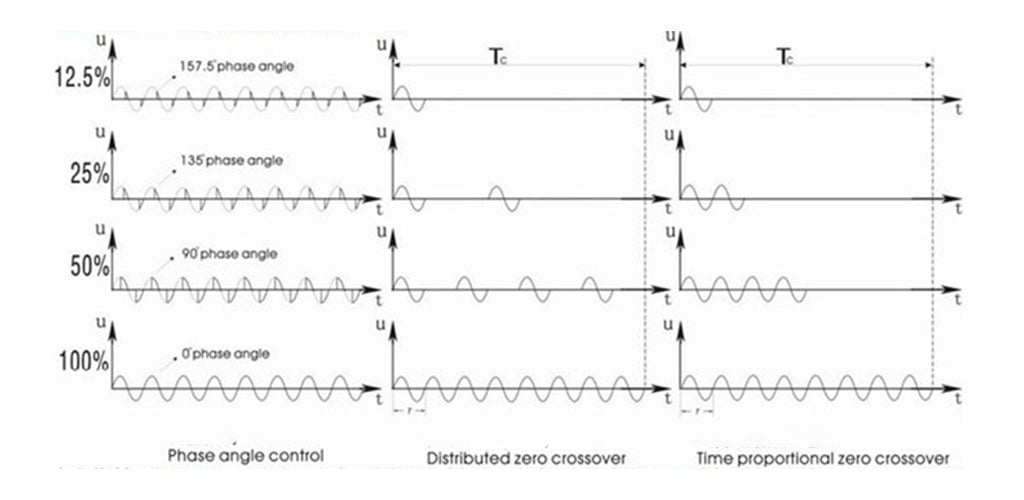
Whether using Phase Control or Zero-Crossing Control, a zero-crossing detection circuit is generally used. The circuit is as follows:

The circuit achieves zero-crossing detection function through an optocoupler:
① When the AC voltage is at the positive half-cycle, the upper optocoupler PC817 in the circuit diagram conducts and then generates a high voltage pulse through the inverter at the moment of positive half-wave zero-crossing.
② When the AC voltage is at the negative half-cycle, the lower optocoupler PC817 in the circuit diagram conducts and then generates a high voltage pulse through the inverter at the moment of negative half-wave zero-crossing. This is how the pulse is generated at every zero-crossing point of the voltage. The waveform is shown below:
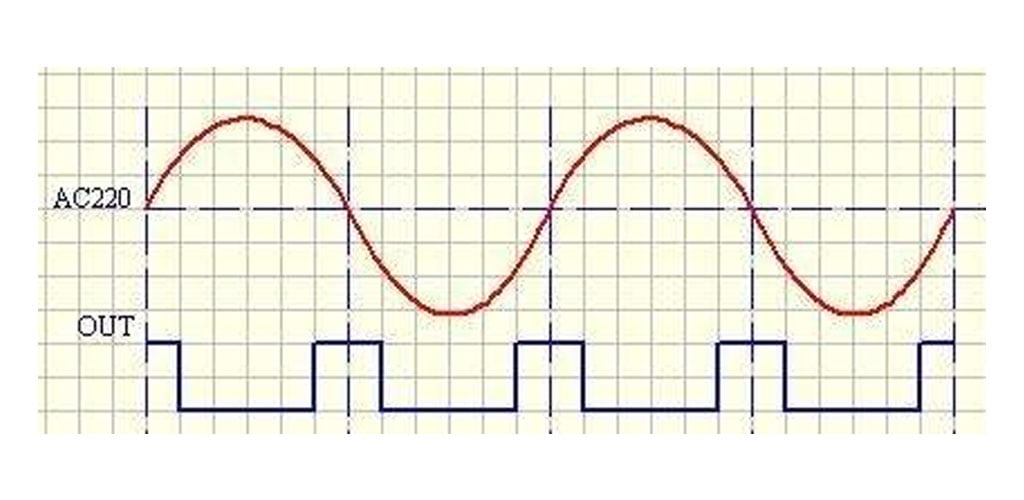
The measured zero-crossing waveform is as follows:
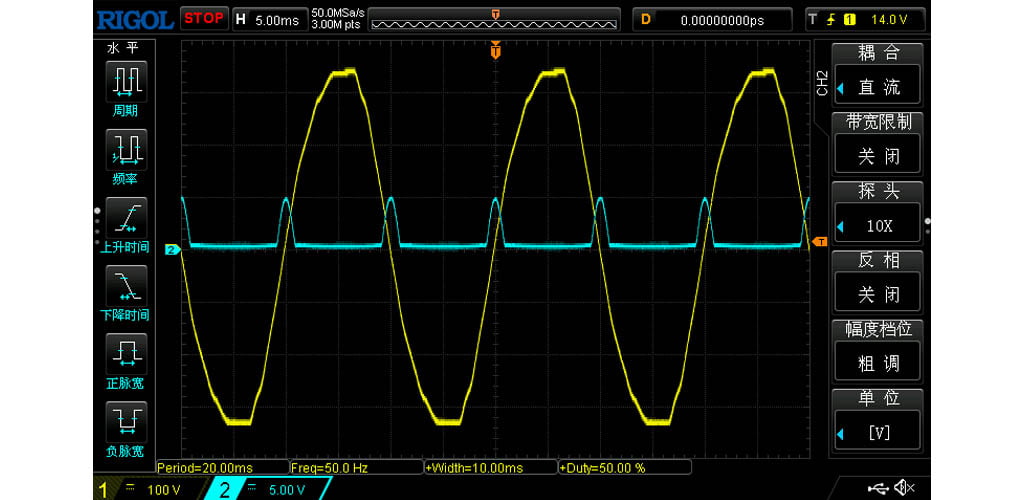
Explanation: The yellow line represents the 220V waveform, and the purple line represents the zero-crossing trigger waveform.
After detecting the signal of the zero-crossing detection circuit, the microcontroller delays for a certain period of time and then opens the thyristor to control its conduction angle, thereby controlling the power output. As shown in the figure below, a pulse is generated by the microcontroller during the rectangular wave output period from the zero-crossing detection circuit, which controls the conduction time of the thyristor and effectively controls the power output.
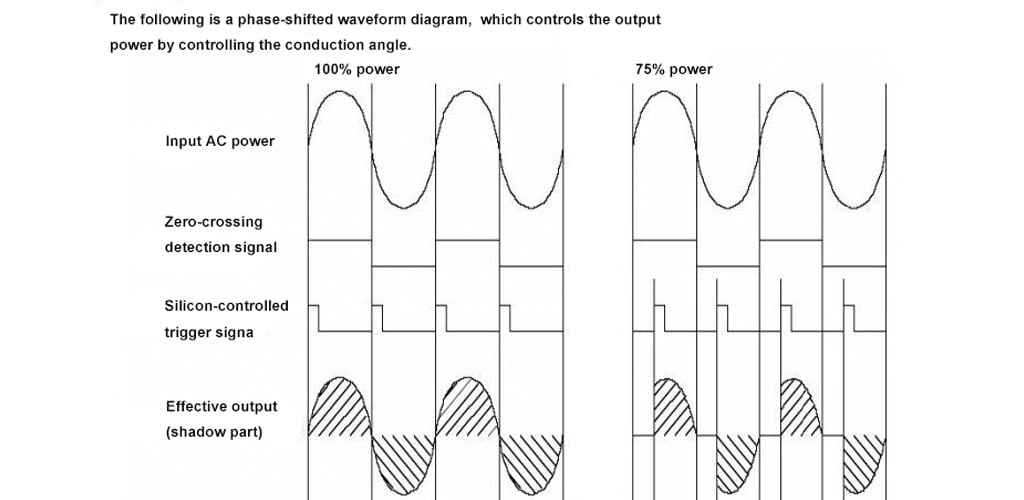
The following figure shows the waveform of Zero-Crossing Control:
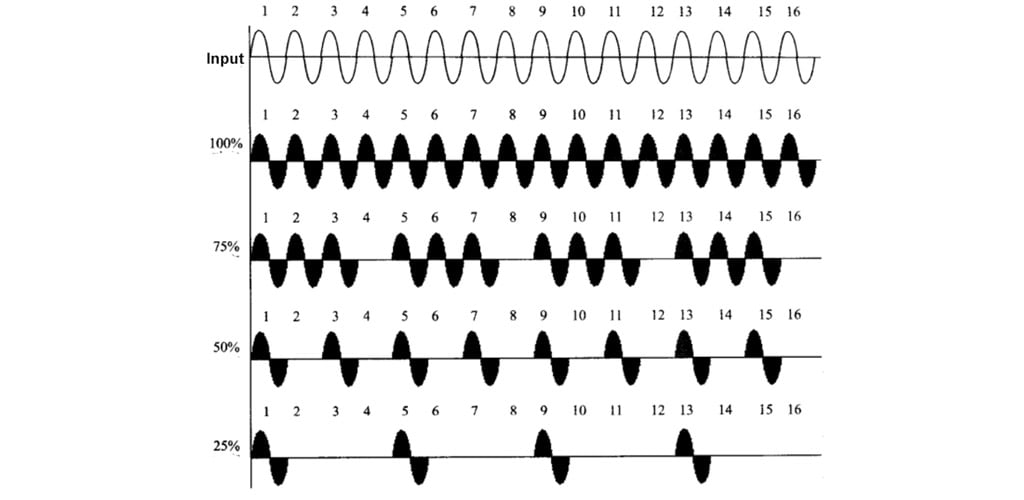
Comparison analysis of phase control and zero-crossing control a scr power regulator
Power regulators composed of thyristors have been widely used in various industrial power equipment such as furnaces, heat treatment furnaces, electrical high-temperature furnaces, and synthetic electric furnaces. Different control modes, such as phase control, distributed zero-crossing control, and time-proportional adjustable control, are selected according to different loads and usage environments.
The thyristor power controller that adopts the phase control mode is called a voltage regulator. It has many advantages, such as small size, light weight, high efficiency, long service life, flexible control, smooth regulation, good three-phase symmetry, easy operation and maintenance. It can conveniently adjust the effective voltage, and can be used for temperature control of electric furnaces, light adjustment, voltage reduction and soft start of asynchronous motors, etc. It can also be used to adjust the primary side voltage of transformers, replacing inefficient voltage-regulating transformers. Continuous phase-angle control ensures stable output and current meter without shaking, but each half-wave will generate harmonics. It is suitable for loads such as fixed impedance loads, variable impedance loads, inductive loads, and IR lamps.
The thyristor power regulator that adopts the zero-crossing control mode is called a power regulator. It controls the frequency of the AC voltage and controls the load power by controlling the on/off ratio of the load voltage frequency. It is mostly used for large inertia loads such as heaters. By using this control mode, temperature control can be achieved while eliminating the high-order harmonic pollution of the power grid caused by phase control, but the control accuracy is slightly reduced. Distributed zero-crossing control has a minimum resolution of 1Hz and does not produce harmonics. When outputting, the current meter will appear to be shaking. It is suitable for fixed impedance loads.
The following is the waveform of phase control tested when connecting an incandescent lamp (resistive load) and adjusting the phase from 100% to 0%:
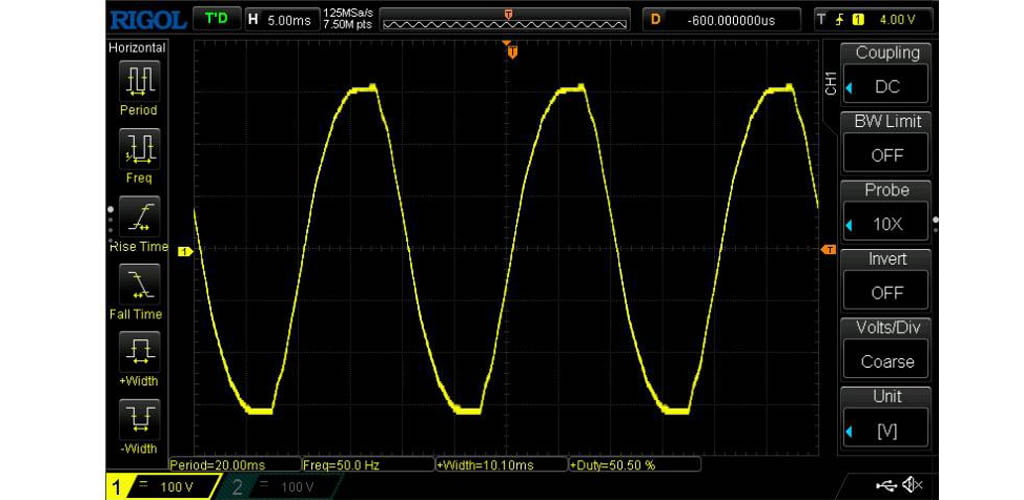
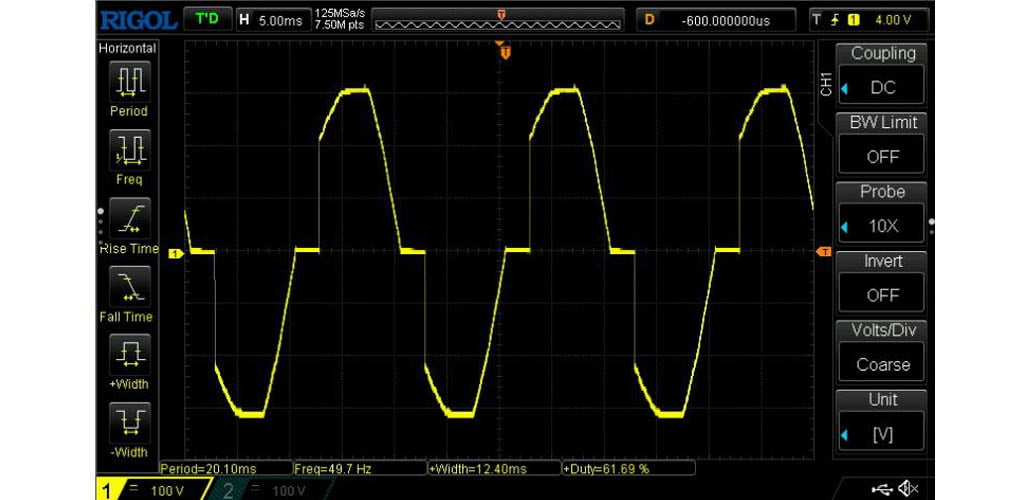
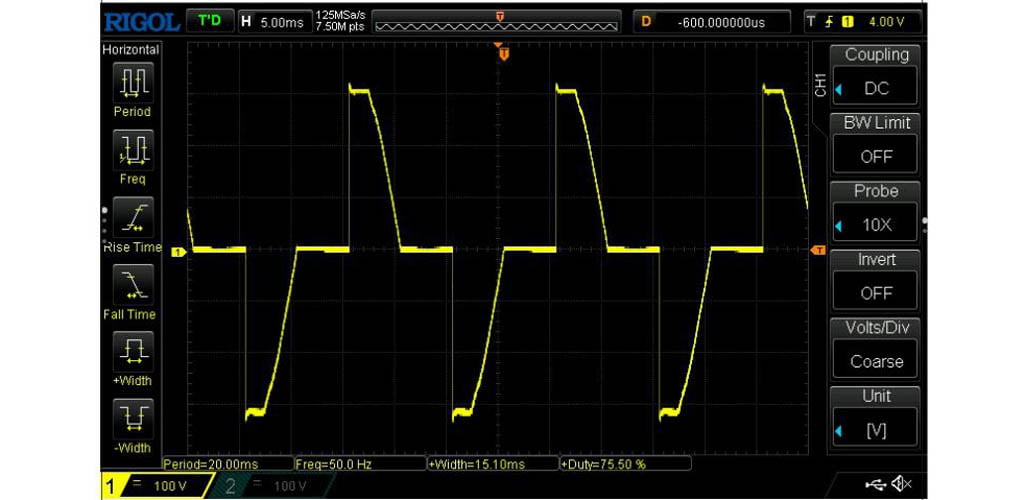
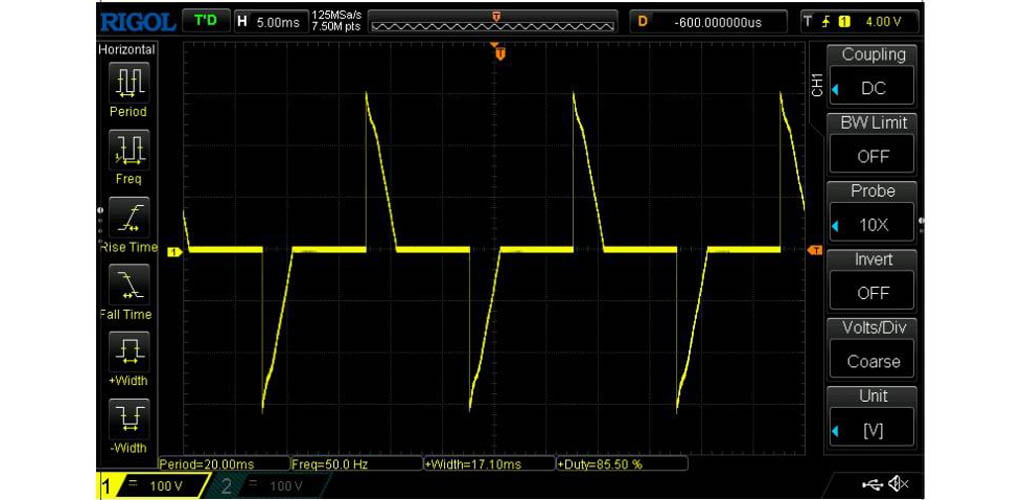


Please note that AC220V high voltage is dangerous, please take necessary safety precautions.
If a compact fluorescent lamp is connected, the waveform tested will be distorted because the lamp is a capacitive load:
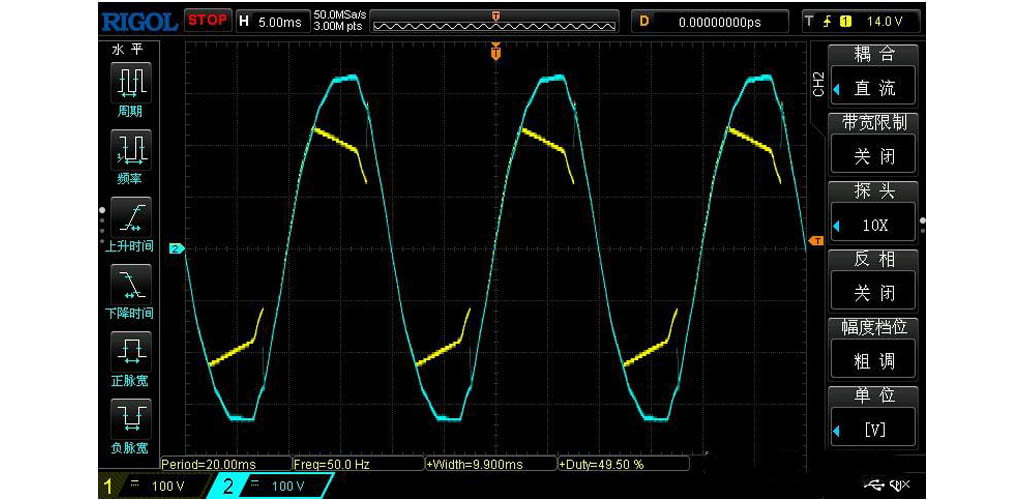
The actual measurement results of a scr power regulator are shown below:
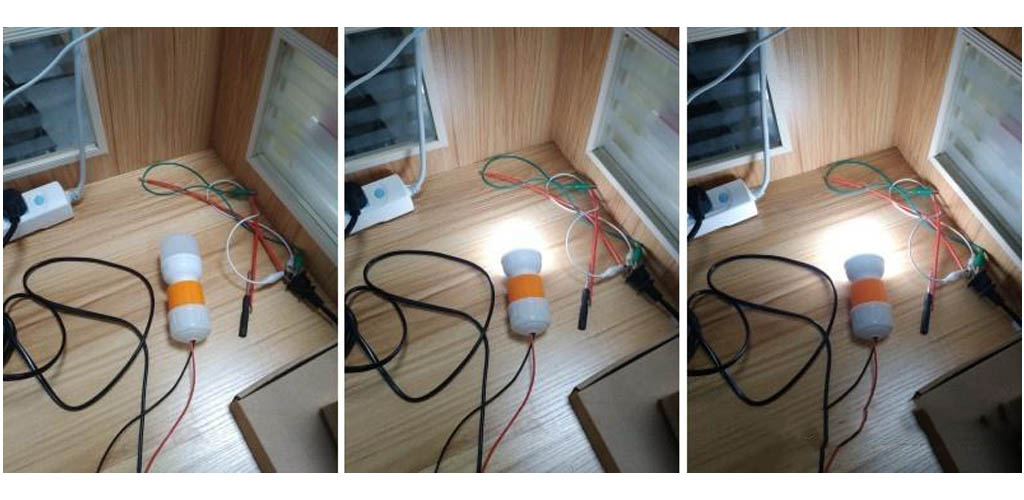
Conclusion
Overall, SCR power regulator is an essential component in many industrial applications that require precise temperature control and energy efficiency. They provide a cost-effective and reliable means for controlling the power output to resistive heating elements, and are widely used in various industries, including food processing, aerospace, automotive, and metalworking, among others.




